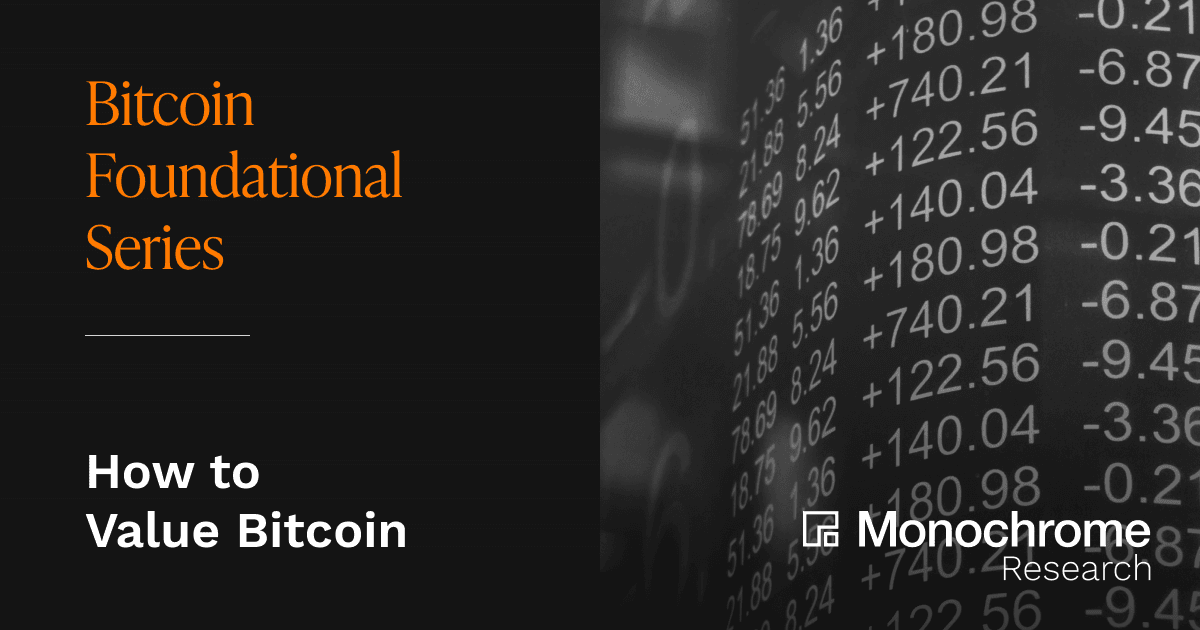Share
Introduction
It can be challenging to reimagine the current financial system. However, whilst most of us will continue to have access to and use traditional banking systems in the foreseeable future, Bitcoin may play a more significant role for the 31% of adults globally that remain unbanked and underbanked under the status quo. In this article, we aim to discuss the key features that Bitcoin’s technology offers this group, and how it differentiates itself from the traditional system that billions of people struggle to engage with.
Connecting the Unbanked
In our introductory article, we asked how does Bitcoin enable diversity and inclusion in itself? The answer is fairly straightforward; Bitcoin can be used and owned by anyone irrespective of nationality, ethnicity, race, gender, or socio-economic status. All that is required is access to the internet and a basic smartphone. We can examine Bitcoin’s inclusivity even further however, specifically within the context of a traditional financial system, and ask the question, what does this mean for the 1.7 billion unbanked and underbanked?
Hurdles Facing the Unbanked
Whilst the digital payments revolution has championed a cashless society, many people - either by choice or through circumstance - aren’t engaged with traditional financial services. Several governments have made an effort to address this, attempting to bank the unbanked, but have not been entirely successful. For example, launched in 2014, India’s ‘People’s Wealth Plan’ helped drive the opening of more than 335 million bank accounts in the span of five years. However, data from the World Bank shows that half of India’s bank accounts remain inactive and 83% of these newly opened accounts are technically ‘active’ but only experience one transaction per year. This suggests that though India’s government managed to increase the amount of opened bank accounts, the accounts aren’t actually being used to deposit money or carry out transactions and people are still not engaging with the digital payment system. Essentially, ‘banking the unbanked’ didn’t actually bank that many at all. The barriers to financial inclusion evidently run deeper than the process of opening a bank account, and are more difficult to dismantle.
The 2017 Global Findex Database, Measuring Financial Inclusion and the Fintech Revolution, sheds some light on the underlying problem. Overwhelmingly, un-and-underbanked adults live in the developing world, with the majority hailing from China, followed by India, Pakistan and Indonesia. Disaggregating further, it found that overall, women and poorer households accounted for a disproportionately greater share of the unbanked. Demographics aside, the database also reveals through a survey of 144 countries that there are a variety of reasons why people do not have an account with a financial institution. Not surprisingly, around a fifth of the respondents identified two physical, practical issues as a barrier; distance and documentation requirements. However, perhaps what is more interesting is that 16% of people cited a more intangible deterrent - distrust in their financial institutions, a concern that financially privileged people can afford not to worry about when they open a bank account.
Even those willing or possessing the desire to open an account simply cannot, as banks don’t provide their services where it is not profitable for them to do so. As a business, there is little logic in opening a branch somewhere rural for example, where most people don’t have an account and have little money to put in one to begin with. Adding onto the distance, they must also provide certain documentation such as different forms of ID, which not everyone possesses or has access to. Ultimately, they are excluded from the financial system.
Utilising Bitcoin
What allows Bitcoin to address many of the hurdles facing the unbanked is its distributed ledger (“blockchain”) technology. At its core, Bitcoin is entirely inclusive, available to anyone with access to the internet and a communications device such as a smartphone. This is thanks to the fact that Bitcoin’s peer-to-peer payment network exists parallel to the traditional financial system, rather than within it.
Providing Financial Sovereignty
Bitcoin’s blockchain technology has massive implications in terms of privacy and security. Providing documentation is not necessary and you do not need to seek permission from a central authority to send or use Bitcoin. Given the level of distrust in financial institutions as a barrier to banking, these features are certainly appealing. People living under corruption and/or authoritarian regimes will benefit the most from this as they reduce their exposure to the risk of state surveillance or the possibility of their accounts being frozen, seized, or lost by banks and governments. Unfortunately we see this occur in several countries where people are being deliberately silenced or suppressed through forceful exclusion from the financial system. For example, in late 2020, citizens protesting against police brutality in Lagos, Nigeria had their bank accounts frozen by Nigeria’s Central Bank for 3 months under the order of the government. More recently, many Nigerians have turned to peer-to-peer methods of payment and are utilising Bitcoin despite disapproval from the central authorities. Bitcoin’s encryption and code ensures it is impossible for any entity to dictate or undermine one’s financial sovereignty.
Furthermore, whilst distance and documentation are preventing people from opening a bank account, there are no such physical barriers required to start transacting with Bitcoin. With minimal set up requirements, Bitcoin relies on the continued development of technological infrastructure which is bringing people online and providing access to adequate communication devices. Consequently, there would be no need to visit the bank or an ATM as often as before. People can effectively ‘bank’ themselves and simply transact Bitcoin from their own pocket.
Levels of Sovereignty
Simply buying some bitcoin does not make you financially sovereign per se, but it gets you off to a good start. The below are the four broad levels of sovereignty that Bitcoin provides, each with its own risks, costs and trade-offs.
- Level 1 - You’ve just bought some bitcoin, and it is in your account on an exchange. As you are not in possession of the private keys to these coins, your access to and/or ownership of them is a dubious proposition. Cost: $0.
- Level 2 - You’ve withdrawn your bitcoin to your mobile wallet on your phone. You are now the undisputed owner of your coins, and their fate is solely in your hands. However, you rely on your wallet provider to tell you your balance. Cost: ~$150 (i.e. budget smartphone price in developing world) + Paper Wallet Backups (Free)
- Level 3 - If you have your own computer, you download Bitcoin Core and run your own node, and connect your mobile wallet to it. You can now verify your own balance and are fully sovereign. Having a full node now enables you to also run a BTCPayServer so that you can engage in commerce without needing a payment processor. You are your own bank. Cost: $0 (if you have your own computer), ~$300 for a basic second-hand computer
- Level 4 - You have your own computer, but you would like a dedicated device that is on 24/7. Your friends and relatives can connect to this always-on node to verify their balances or process payments through your BTCPayServer. Not only are you your own bank, but also a bank for your local community. Cost: ~$500.
So whilst there are small financial barriers to entry to gain full sovereignty, the cost to run a Bitcoin node will reduce over time, as Bitcoin’s computing and storage requirements grow linearly, whereas price of technology deflates exponentially.
Obstacles to Bitcoin’s Inclusivity
One of the most marked obstacles for true diversity and inclusion under Bitcoin, particularly in the short-term, is internet access and smartphone penetration. Much like the unbanked population, approximately 96% of those offline live in developing countries, and women continue to be overrepresented in this demographic as gender disparities persist. Connectivity is improving year by year, however. At least two-thirds of unbanked adults own a mobile phone suitable for financial services. Consequently this hurdle will become surmountable in the long term, provided that technological adoption continues to bring more people online, ultimately benefiting Bitcoin’s accessibility.
Of course, just like the millions of newly opened bank accounts in India, the fact that Bitcoin is available to be used and owned by anyone, doesn’t inherently incentivise its use. It is entirely the decision of the individual whether or not they wish to use what is accessible to them. A growing appetite to accumulate savings might shift attitudes towards Bitcoin however, as the digital currency allows anyone to save as much or as little as they want. This is opportune for low-income households that tend to save very little and less frequently and do not have banks willing to provide their services nearby.
The ability to learn how to transact with Bitcoin may also limit its potential use. Without the sufficient employment of technology, whether that be via a mobile wallet or other platform alike, people will not be able to engage with the alternative payment system properly. This is not to say that in order to use Bitcoin you need to understand its underlying blockchain technology, but much like mobile banking, you will need to navigate a Bitcoin wallet to send and receive payments. This issue is more likely to affect older individuals due to generational gaps in technological literacy and experience in comparison to their younger counterparts. In fact, in the 47 UN-designated least developed countries (LDCs), young people are 1.53 times more likely to be connected to the internet. This implies that young people will more likely be able to engage in digital payments and that older generations may lag behind.
In time, these limitations will become less of a hurdle. The gap in internet and smartphone usage between developed and developing countries is shrinking, and as payment systems continue to go digital, physical cash will become scarce. Consequently, whilst ongoing opposition and regulation from central authorities may suppress the rate at which people adopt Bitcoin, its inclusivity is likely to improve with time.
Conclusion
Bitcoin offers a financially inclusive method of digital payment that only relies on access to the internet and a smartphone. Though it is still some way from being completely accessible to the unbanked and underbanked population, it certainly provides an alternative which curtails several existing barriers to inclusivity in the traditional financial system. As improvements in technology continue to persist, more people will be well equipped to employ Bitcoin and engage in a different payment system that discriminates between no one.
The content, presentations and discussion topics covered in this material are intended for licensed financial advisers and institutional clients only and are not intended for use by retail clients. No representation, warranty or undertaking is given or made in relation to the accuracy or completeness of the information presented. Except for any liability which cannot be excluded, Monochrome, its directors, officers, employees and agents disclaim all liability for any error or inaccuracy in this material or any loss or damage suffered by any person as a consequence of relying upon it. Monochrome advises that the views expressed in this material are not necessarily those of Monochrome or of any organisation Monochrome is associated with. Monochrome does not purport to provide legal or other expert advice in this material and if any such advice is required, you should obtain the services of a suitably qualified professional.
Related Articles

How to Value Bitcoin (2024 Update)
Valuing Bitcoin can be a challenge as, due to its abstract nature, there is “nothing to relate it to.” However, by shifting the lens through which we view Bitcoin, we can arrive at compelling theories through Metcalfe’s law, Stock-to-Flow, cost of production, market sizing and relating it to a technology start-up. Taken together, the following valuation models can be useful, though individually insufficient. Each model hosts criticisms, accommodating for improvements and adaptations.
